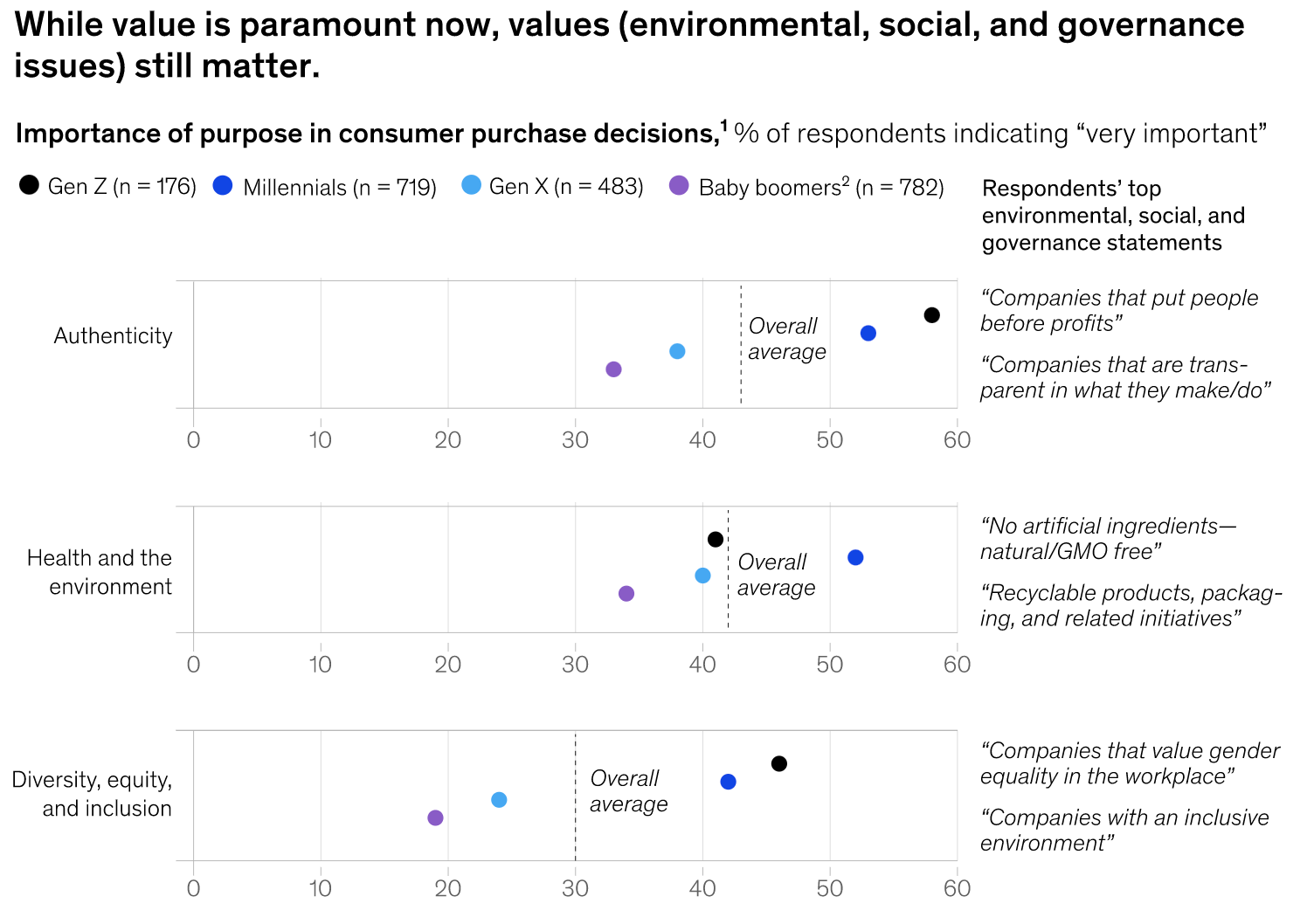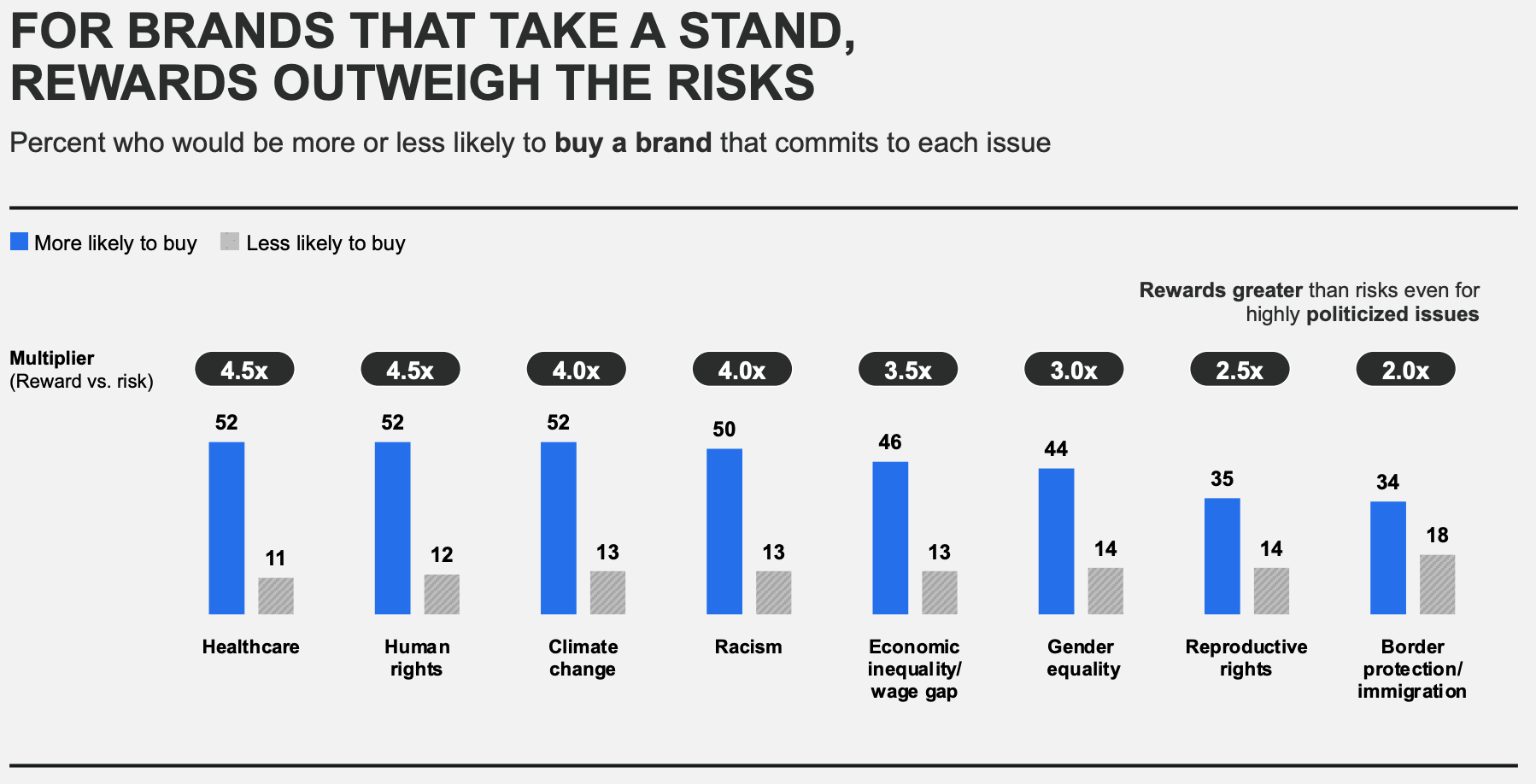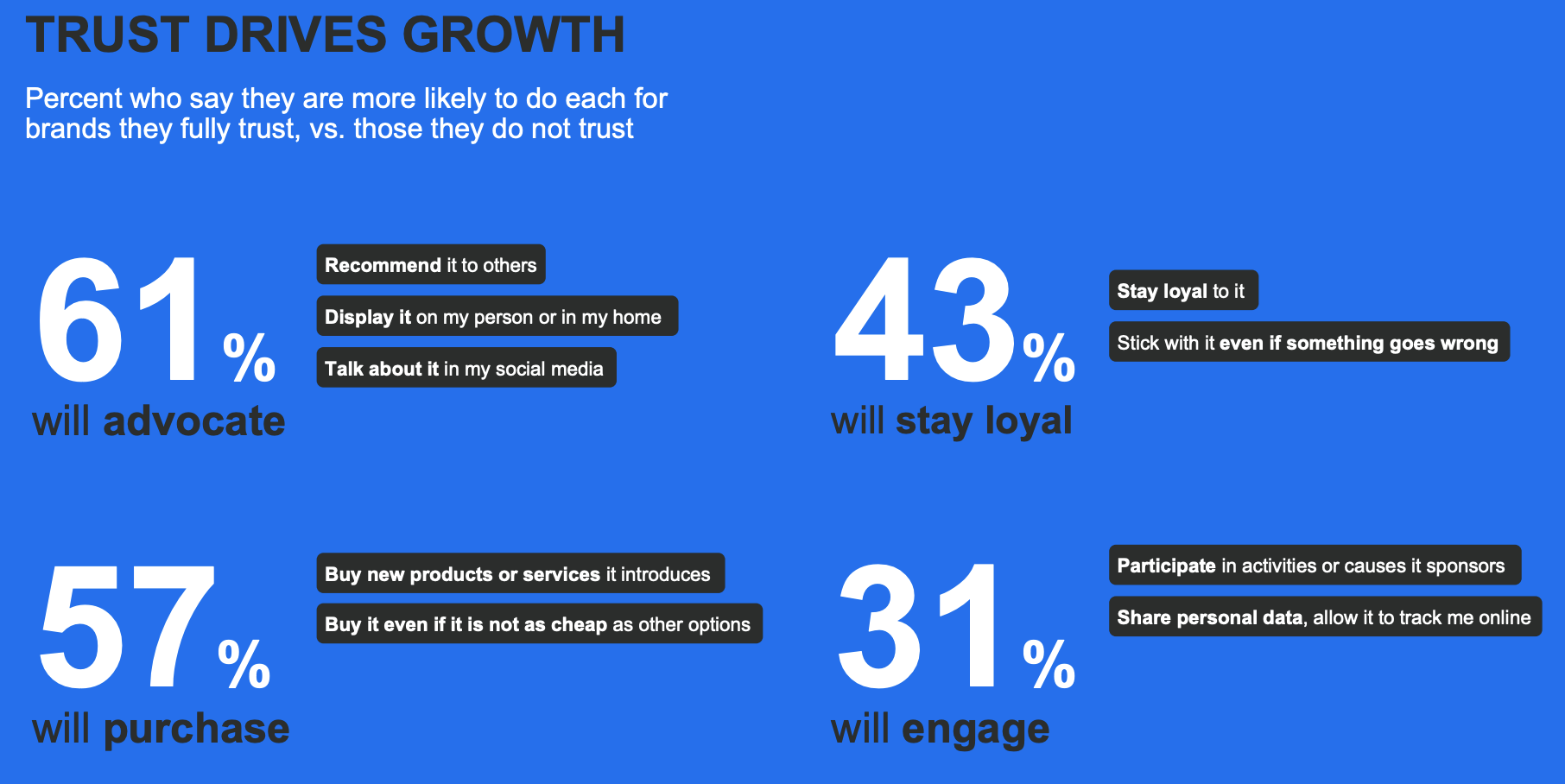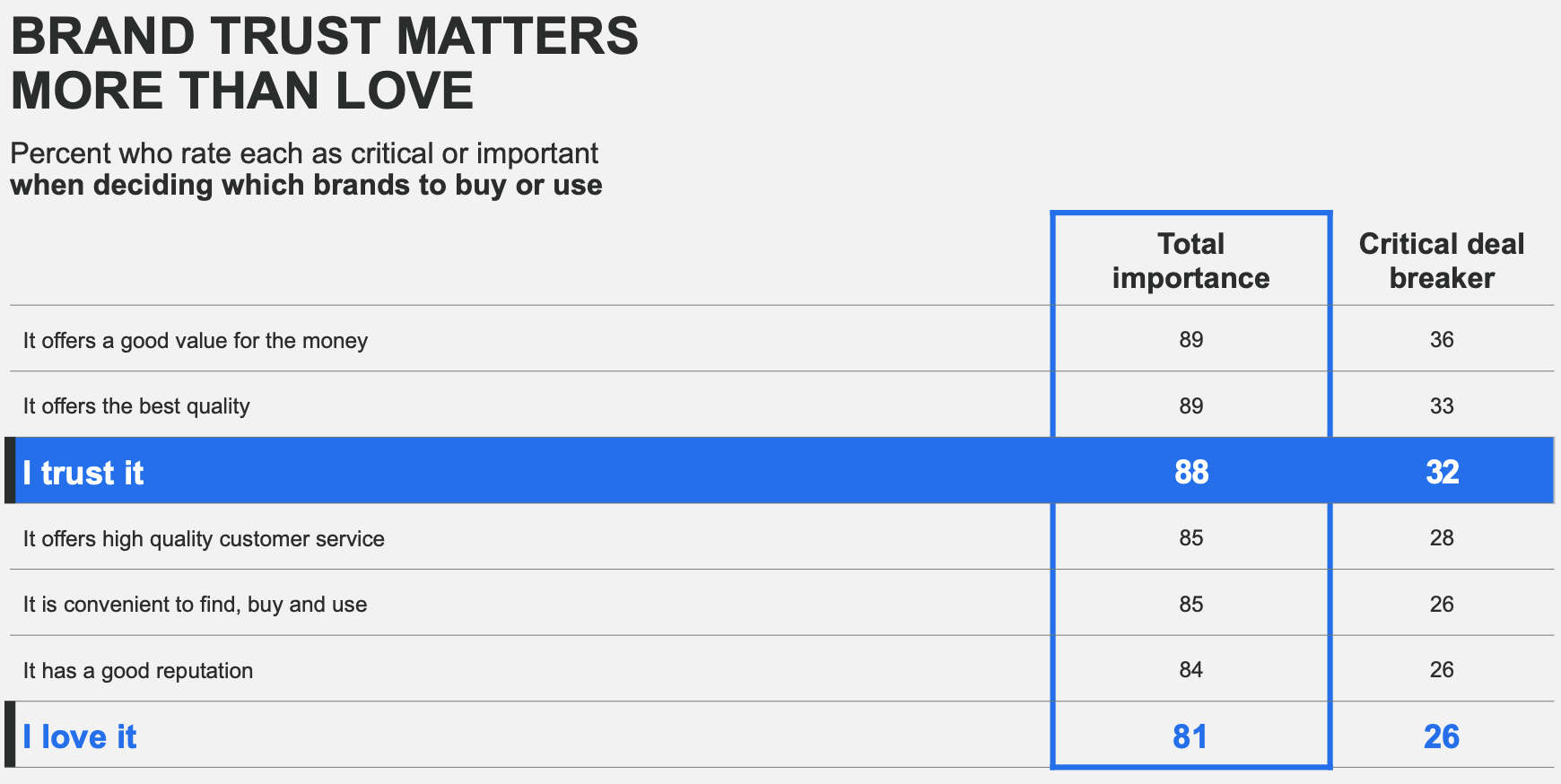Today’s consumers expect more from the brands they choose to interact with. It’s no longer enough to offer your consumer quality products or services; your customers want you to put your values front and center.
Neutrality in all things is no longer an option if you want to build customer connections and keep the competitive advantage, and that’s especially important when people are getting pickier about where to spend their dollars because of inflation.
The pressure to focus on the purchase decision and lower funnel campaigns can make it difficult to find space in your strategy (and budget) to engage with issues in meaningful ways that resonate with your consumers.
So how can you drive growth by building social responsibility into your core brand value proposition and making it part of your marketing message?
Leverage marketing data to identify what your customers care about
When customers are choosing between products, price matters. But it’s not the only factor, even as budgets get tight. They also increasingly look at the impact a brand is having on the wider world, especially younger consumers.

- Source: McKinsey
Millennials and Gen Z consumers are much more cognizant of their ability to affect change through the power of their purchases, and they’re looking for brands that are willing to take a stand. According to a recent survey by BBMG, 47% of Gen Z want brands to use their voice and influence to stand up and speak out because it’s the right thing to do.
It’s critical to realize that your brand can’t (and shouldn’t) weigh in on every issue with the same degree of commitment to taking action. That’s where marketing data can help; marketers have access to insights that tell us what issues are most important to your core customers, as well as a strong pulse on your brand’s core values. That combination unlocks authenticity in your social positioning and can help mitigate the risk of blowback or accusations of insincerity.
“Marketing can come in and raise the questions around what your brand cares about and what aligns with your brand. Then you can have that conversation at all levels of the company so t you can touch on the things that are core to who your brand is.”
Businesses tend to think in terms of risk and reward. Taking a stand does come with some amount of risk: you’re probably going to piss some people off if they don’t agree with you. But it also comes with a great deal of reward if you’ve found alignment between your brand and what your core customers think is important.

Source: Edelman
Start by aligning internally around what matters
Your customers aren’t stupid. They know when they’re being pandered to and when a brand is being genuine. So it’s critical to take the time and set up cross-functional conversations to figure out what the business is prioritizing, where there’s potential to take further action, and what you can meaningfully add to the conversation.
Get clarity by aligning on the long-term vision, purpose, mission, and values that define your brand so you have the context you need to make smart decisions.
“Sometimes having a little bit of silence gives you the space to then come back with something very impactful after everybody’s had a chance to have a conversation.”
It’s much more impactful to say a few things that your business can really stand behind then release a bunch of statements that won’t matter in a couple of months when a particular issue isn’t front of mind. If you’re going to make an issue a central part of your value proposition, it has to weave through the entire company or there will be a disconnect that customers won’t be able to reconcile.
That’s how you build trust with your customers and earn their business for the long term. And they will help drive growth as not just loyal lifetime purchasers, but advocates.

Source: Edelman
Investing in sustainability or DEI should be a long-term commitment, and your brand needs to have the appetite to sustain that commitment if you want to drive brand equity and loyalty. Marketing can help hold the company accountable and make sure any external messaging or creative is connected to actual business priorities.
Back up values-focused marketing messaging with real action
It’s not enough for brands to speak out; the proliferation of information on the internet means it’s easier than ever for consumers to find out whether or not your business is actually doing something about it. If you’re just using a movement as a moment in time and opportunity to get your name out there because it’s trending, you’re going to be called out for it.
“Authenticity is who you are day in and day out. It’s living the brand. It’s how your brand is year-round, it’s what’s core to it.”
When your brand can’t back up talk with action, you risk alienating the customer and losing their business forever. Any marketing that leverages social responsibility as part of your core value proposition needs to connect to real initiatives or changes in the business. Your customers need to be able to trust that you mean what you say.

Source: Edelman
As you identify the issues that make the most sense for your brand to engage with in your marketing, don’t set your brand up for failure by forgetting the action part of the equation. Today’s consumers want receipts. They want transparency. And although the potential reward from adding a mission to your marketing is high, the risk of blowback, if you aren’t doing anything about it, is much higher.

Source: eMarketer
Work with product teams, PR teams, and other stakeholders to figure out what you can talk about publicly and how you plan to make that information available. You don’t need to show proof in every ad campaign, but you need to make it easily available to consumers who want more insight into what your business is doing.







Responses